12 Plot Twists So Insane, Even AI Couldn’t Predict Them

Imagine stepping out of your spacecraft and setting foot on the surface of the Moon. Under your feet, the ground is covered with a fine material that looks like powder. That’s lunar dust. You look around and take a lungful of fresh air. It smells very different from the air on Earth but still nice...
Unfortunately, this is a highly unlikely scenario. And one of the reasons is that the Moon has almost no atmosphere. Earth’s natural satellite is too small — less than 2% of our planet’s mass. That’s why it doesn’t have a magnetic field strong enough to keep an atmosphere. But even if the Moon had it, solar winds would immediately pull it away.
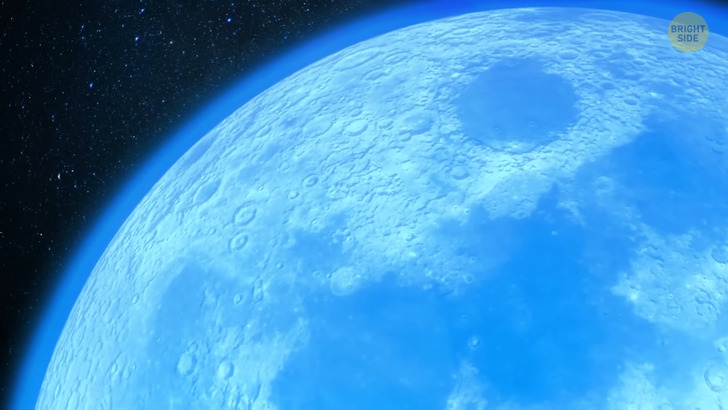
But if you could visit the Moon 3 or 4 billion years ago... Oh, you’d see a very different picture! At that time, the Moon most likely had an atmosphere! It formed at the times when powerful volcanic eruptions were rocking the satellite. Gases spread all over the Moon’s surface — it happened so fast that they didn’t have enough time to escape into space. At that time, the lunar surface was covered with basins filled with volcanic basalt. Just imagine: ginormous plumes of magma hurtling high into the air, falling to the ground, forming lava flows... That’s how the basalt basins appeared on the surface of the Moon.
At one point, scientists on Earth got their hands on samples brought from the Moon. They found out that lava flows there contained not only carbon monoxide and sulfur but also the building blocks of water! Thanks to these samples, researchers managed to calculate the amount of gas that rose and formed the atmosphere. It became the thickest around 3.5 billion years ago and existed for about 70 million years. After that — poof! — the atmosphere was lost in space.
But the coolest thing? When the Moon did have an atmosphere, the satellite was three to ten times closer to our planet! One computer simulation even suggested the Moon was probably up to 19 times closer than it is now. The distance between it and our planet could be 18,600 miles. While these days, it’s around 240,000 miles away. That’s why the Moon looked much, much bigger in the sky. Unfortunately, at that time, not even dinos were around to admire the view. Hmm. Neither was I.
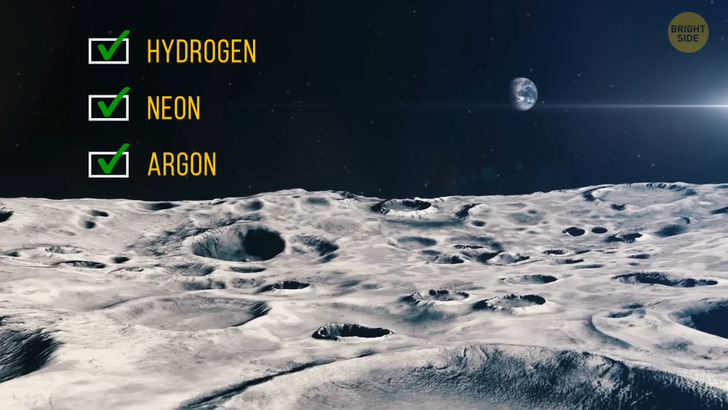
At the same time, the most recent studies have confirmed that our Moon actually does have an atmosphere! It’s composed mostly of hydrogen, neon, and argon and contains some very unusual gases, like potassium or sodium. You can’t find them in, let’s say, the atmospheres of Mars, Venus, or Earth. Sadly, such an atmosphere isn’t suitable for us, oxygen-dependent creatures.
But guess what? There are loads of oxygen on the Moon! Ah, I know, it must sound confusing. But the thing is, this oxygen isn’t in its most common gaseous form. Nah, it’s trapped in the layer of rock and dust covering the surface of the Moon. This layer is called regolith, and it contains up to 45% oxygen!
So does it mean that if people learned how to extract this oxygen, we would be able to live on the Moon? Not so fast. The oxygen in those rocks is very tightly bound into the minerals. And to break these components apart, we’d need tons of energy and special equipment. But if people managed to start this process, the Moon would deliver quite a lot of oxygen.
There’s a theory that the Moon might have formed during a collision between Earth and another planet. This planet must have been smaller, the size of Mars. It probably happened around 4.5 billion years ago. Another theory claims that the Moon used to be an asteroid or some other wandering body. It formed somewhere else in the Solar System. When it was passing by Earth, it got caught by our planet’s gravity.
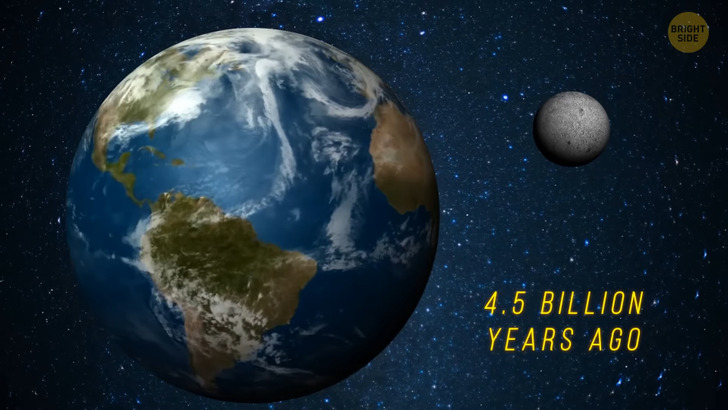
Other experts think that at some point in the past, Earth was spinning so fast that some of its material broke away. It soon started to orbit our planet — that’s how the Moon appeared in the sky. And the least exciting theory claims that Earth’s natural satellite could simply appear along with Earth during our planet’s formation.
These days, the Moon is the fifth-largest natural satellite in our Solar System. It’s also one of the densest — second only to Jupiter’s satellite Io. Most likely, the Moon has a tiny core — no bigger than 2% of the satellite’s mass. About 420 miles wide, it consists mostly of iron and sulfur. The Moon’s surface is dark — even though Earth’s natural satellite is the brightest object in the night sky. In reality, its reflectance is just a bit higher than that of asphalt!
You might have heard that the Moon (along with the Sun) causes tides in the oceans and seas on Earth. The satellite’s gravitational pull creates something called the tidal force. It makes the water bulge out on the sides that are the closest to the Moon and farthest from the satellite. These bulges are what we know as high tides.
But what not so many people know is that the Moon also causes rocks to rise and fall — just as it does with water! Of course, this effect doesn’t look as dramatic as ocean tides. But it’s still noticeable. Earth’s solid surface moves by an inch or so with each tide. Not only does the Moon cause tides on our planet, but it also slows down its rotation! This phenomenon is known as tidal braking. It increases the length of a day on Earth by a bit more than 2 milliseconds per 100 years.
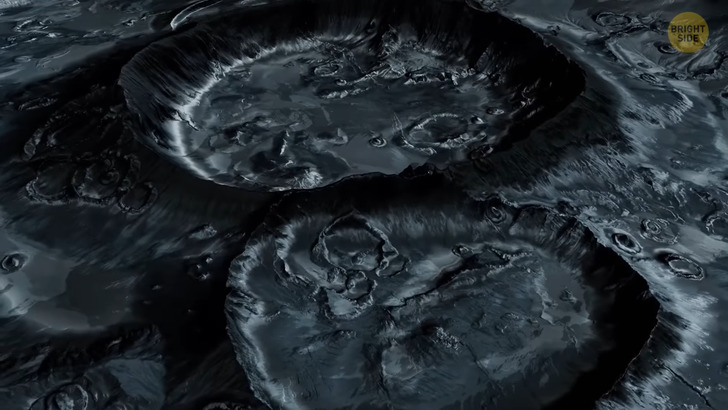
The Moon is also moving away from Earth — at the same rate at which your fingernails grow. That’s about 1.5 inches per year. If one day, it floats away into space, our planet will have to live through tough times. Without the stabilizing pull of the Moon’s gravity, Earth’s tilt would start changing wildly — from no tilt at all (meaning no seasons) to a large tilt (resulting in extreme weather). Since the Moon doesn’t have an atmosphere, nothing protects it from extreme temperatures. It gets incredibly cold on the “night” side. Meanwhile, the “sunny” side is literally boiling, with a temperature of 250˚F.
Another thing the Moon can’t protect itself from without an atmosphere is meteorites. That’s why the surface of the satellite is dotted with craters. For comparison, there are about 190 identified impact craters on our planet. Many of them are hidden by vegetation or covered with water. But if we speak about the Moon, the number is so much greater — several million! And around 5,000 of them are more than 12 miles across!
The Moon is less seismically active than Earth. That’s why these craters and other ancient formations stay in perfect condition for centuries. But even though the Moon’s surface is mostly dormant, Earth’s natural satellite still experiences moonquakes. They start several miles beneath the surface. One theory suggests that they may be happening because the Moon is shrinking as its insides are cooling. Scientists say the Moon has become around 150 feet skinnier than it used to be several hundred million years ago.
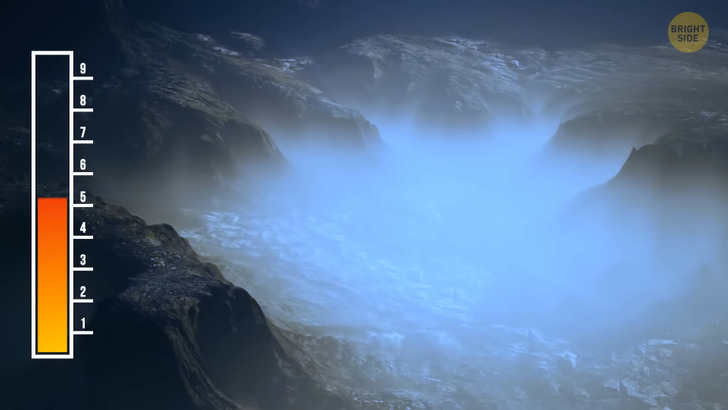
So, how’s it work? Picture a grape turning into a raisin. It wrinkles while shrinking. The same is happening to the Moon. It’s shrinking, and it’s wrinkling. But unlike a grape, the Moon doesn’t have any flexible skin. Its surface is hard and brittle. So, as the Moon gets smaller, the crust cracks and breaks. Its sections get pushed over neighboring parts.
Researchers are almost sure that such faults are still active and likely responsible for the quakes shaking the Moon. Some of these quakes are pretty strong, up to 5 on the Richter scale! When you look up at the Moon, you always see the same side of Earth’s natural satellite! Like our planet, the Moon rotates around its axis. But this rotation lasts around 27 days. This is the same time the Moon needs to orbit Earth. Such a phenomenon is called “tidal locking.”
Before space exploration started, people had never seen the other face of the Moon. They didn’t know what the far side looked like. While the near side of the Moon is mostly large plains covering impact basins, the far side is rugged and cratered. The crust is thicker there, with less evidence of volcanic activity. By the way, the Moon isn’t perfectly round (or spherical). It’s shaped like an egg. When you’re looking at it, one of its small ends is always pointing at you. This is the reason why the Moon’s center of mass isn’t its geometrical center. In reality, it’s a bit more than 1 mile off-center. Like a poorly made golf ball.











